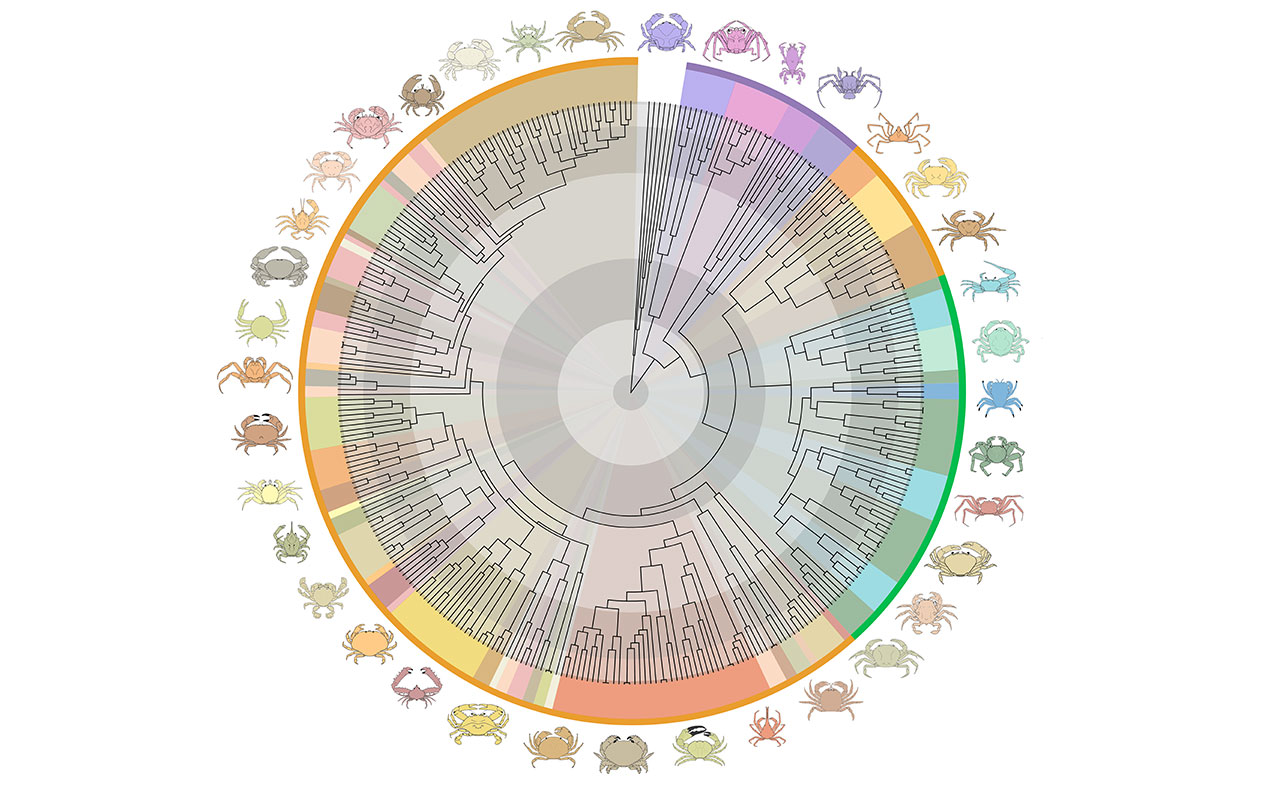Crabs keep evolving to go from the sea to the land — and back again
True crabs evolved to migrate between marine and land environments multiple times throughout their 250 million-year-old history, new study finds.

Crabs have evolved to migrate from the sea to land then back again multiple times over the last 100 million years, scientists have discovered.
A new study, published Nov. 6 in the journal Systematic Biology, found that true crabs (Brachyura) — which consist of 7,600 species across 109 families — have evolved to migrate from marine to land habitats between seven and 17 times. (True crabs are distinct from other crustaceans that have developed crab-like bodies).
They also found that on two or three occasions, crabs even went back to the sea from land. "It is 100% harder going from being on land to water," lead author Joanna Wolfe, a researcher in organismic and evolutionary biology at Harvard University, told Live Science.
Related: Why do animals keep evolving into crabs?
Most arthropods left the ocean just once during evolutionary shifts more than 300 million years ago, in a process known as terrestrialization.
In the new study, researchers set out to discover how often and when true crabs left the marine environment for land. They compiled three new datasets for 333 species of true crabs from 88 families, including both marine and non-marine groups.
Using the entire crab fossil record, the researchers applied two mapping pathways: one where the crab goes from a fully marine environment to land directly through intertidal zones such as beaches, and a second where the species migrates from fully marine to land indirectly, through estuaries, fresh water, riverbanks, coastal forests and jungles.
Get the world’s most fascinating discoveries delivered straight to your inbox.
Their findings enabled the team to classify each crab species into a gradient of terrestriality — or how suitable they are to life on land. Using methods originally developed to study how viruses like COVID-19 evolved, the researchers determined the timing of true crab evolution.
Their findings suggest that true crabs emerged about 45 million years earlier than previous estimates and could date back to the mid-Triassic period (251.9 million to 201.3 million years ago), making them as old as some of the earliest known dinosaurs.

They left the ocean between seven and 17 times as a result of convergent evolution — when different organisms independently evolve similar traits.
Most crabs, they found, are only able to survive in semi-terrestrial habitats, with land-based crabs found to be concentrated in one species-rich group of the family tree. "It is a common misconception that crabs are trying to evolve to live permanently on land. Most crab species still flourish in the ocean," Wolfe said.

Carys Matthews is a freelance writer for Live Science and has a passion for the natural world. Most recently the group digital editor of BBC Wildlife and BBC Countryfile Magazine, she writes about the outdoors, nature and health and fitness. Prior to this she has worked for a number of sports and environmental titles in the U.K.


